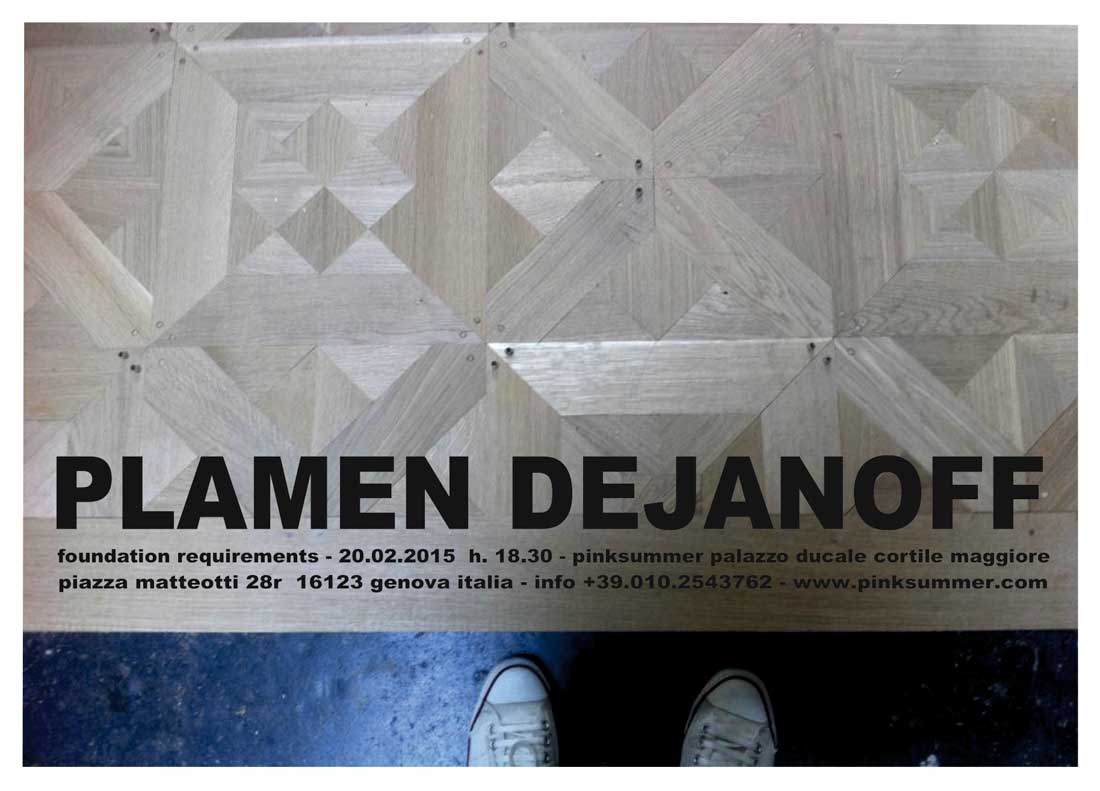Plamen Dejanoff – Foudation Requirements

Press-release
About Veliko Tărnovo and the Foundation created by Plamen Dejanoff in the city where he was born, the financial pages of several mainly British newspapers of the years 2005-2006, such as “The Telegraph” and “The Indipendent” testify that there was a lot of excitement around the booming of Bulgarian real estate market at that time.
They wrote about a 6% 7% consistent annual increment, with peaks of 25% and up to 100% increment in some coastal areas. A property estimated around 150.000 GBP in England was sold for 11.000 GBP in in Bulgary.
In those years, the Bulgarian government encouraged people over 50 living abroad to come back to their country to spend their retirement salaries in their homeland. British stormed the hills of Veliko Tărnovo . We do not remember if the mayor of Veliko Tărnovo or the administrator of a city in that area affirmed: “When the Brits arrive, services improve, the infrastructures gets better and jobs are created”.
In the meantime Veliko Tărnovo , formerly praised also by Le Corbusier for the organic features of its architecture, was inserted by “Lonely Planet” guide among the top 10 place to visit in Eastern Europe, together with Prague, Krakow and Transylvania. On that famous guide, one can read: “The evocative capital of medieval Bulgarian tsars, sublime Veliko Tărnovo ”.
It happened just around 2006 what we defined a “drift toward craft production” in Plamen Dejanoff research, when the artist seemed to indicate craft manufacturing, something between handicraft and corporate industry production, as the ultimate frontier of luxury.
Because both of the lower cost of work and the competitive skills of the workers, with his project “Planet of Comparison” Plamen Dejanoff decided to move the artistic production to East Europe.
It was then, or little later, that he decided to acquire some properties in Veliko Tărnovo , and afterwards, in reference to his “Kapitalischer Iper / Super Realismus” and the performative and imitational matrix in respect of the economic trend that is distinctive of Dejanoff work, we asked ourselves many times if that was actually some kind of real estate speculation transplanted into the art field, where he indeed feels as comfortable as at home.
It was around 2009 that Dejanoff decided to transform his property in Veliko Tărnovo , by creating a foundation and by starting to outline it.
In the meantime, according to what was published by “Financial Mirror” in 2012, in 2009 the crisis that hit the countries of the Eurozone slowed down abruptly the rise of the prices of Bulgarian real estate market.
The foundation presented by Plamen Dejanoff as a public space envisaged the construction of a library, a movie theater, a venue, a workshop for artistic production and also a series of apartments for artist residences.
The “Bronze House” project, apart from being an imaginary and modular diagram representing the foundation, is a precious strategic marketing vehicle, useful to raise funds to make the foundation happen.
“Bronze House” was conceived to adapt to diverse rooms, cultures and landscapes, to grow bigger and to transform, if not in its essence in its appearance, every time that it is presented and displayed: Mumok, Mac, Mambo, Hamburg Kustverein, Frac Champagne-Ardenne.
Plamen Dejanoff compared his idea for the Veliko Tărnovo foundation at Chinati Foundation, created in the 70s by Donald Judd. Initially supported by Dia Foundation, New York, it opened to the public in 1986 as an independent no-profit institution, financially supported with public funds.
A long time has gone since we first time met Plamen Dejanoff work, actually Heger / Dejanov work as he called Dejanov back then and was working together with Swetlana Heger. It was on the occasion of the exhibition “After the Wall.
Art and Cultures in Post-Communism” that opened at Moderna Museet, but that we saw in Berlin at the Hamburger Bahnhof in December 2000. Inside that exhibition, with which Dejanoff has never been particularly happy, Heger/Dejanov work looked like communicating in a different language to us.
Much later, after having followed several Plamen Dejanoff projects (“Collective Wishdream of Upper Class Possibilities”, “Planet of Comparison”, “The Bronze House” until “Foundation Requirements”), we eventually realized that it was not a different language, but a strange accent instead, something that escaped any classification.
The impossibility to classify it has always been a distinctive feature of Dejanoff work, together with its aesthetic appeal and its metamorphic quality adopted as a method, which, not to mention Engels or Marx’s Capital, could be related to some kind of historical materialism, following the neo-liberal evolutionary economy.
We saw many people wearing denim over tuxedo, but those who wear denim under tuxedo are a significant minority.
Unlike the artists in exile from the “iron curtain”, who in the 60s and 70s mastered the art of adding irony while focusing Germany’s self-confident financial gallop after WW2, Plamen Dejanoff work seems noncritical and, if there is any irony in it, it is well sealed deep inside it.
After all, irony, no matter how bitter can it be, involves some optimism anyway, provided to the artists of Capitalist Realism by the presence of an alternative solution, even though imperfect. The horizon presented by Plamen Dejanoff has no alternative solution, it pictures an economy of command and a centered global planning.
Sometimes Dejanoff work, for it mimetic imitational excess, appears to us as a kind super powerful homeopathic vaccine against the capitalism of planned profit that force nations to dismantle welfare more or less quickly by making cracks between social classes deeper and, on the other hand, on an international scale, dug a chasm between developed and developing countries.
Sometimes Dejanoff work appears densely romantic too, a melancholic romanticism, enough to let us imagine that the “Bronze House” is to Veliko Tărnovo , Bulgary, what Brancusi ‘s Endless Column is to Targu Jui in Romania. The Bronze House as some kind of totem.
For his fourth solo show at pinksummer, Plamen Dejanoff will present the project “Foundation Requirements”, which take us straight back to last Venice Biennale of Architecture, curated by Rem Koolhaas and titled “Fundamentals” Koolhaas decided to focus on those fundamental elements of architecture, that any architect has necessarily used anywhere and anytime, such ceiling, floor, door, ect. His intention was to make up an exhibition about Architecture and not architects, as if architects were an obstacle to the natural flow of architecture.
At the same time Koolhaas assigned the theme “Absorbing Modernity” asking the “nations” to tell about last 100 years history of local culture and architecture and to account on how, for better or for worse, they reacted to Modernism.
On one end, the action of Koolhaas seemed to us a curious return to order, even though with a different motivation; on the other hand, that looks like a temporary refusal, lasting perhaps as long as the exhibition did, of the aulic architecture in favor of the “not pedigree architecture” such as what Lars Von Trier did in his “Dogma” period in terms of filmaking.
In this respect, such an action has reminded us of Bernard Rudofsky, who, even though he did not left any fundamental marks regarding factual architecture except the splendid Moon sandals, wore by Jacqueline Kennedy and Jane Birkin among others, gave an anthropological breath to quite some 70s architecture with his famous exhibition “Architecture without Architects”, presented at MOMA in 1964.
Such a long discourse on the recurring reminders of vernacular architecture was useful to justify an artist who in the early years 2000 chose to live in Berlin in a house designed by Emst&Gruntuch on Hackescher Markt, furnished with plastic seats by Marc Newson and Vistosi’s lamps from the 50s, and who now with his new project “Foundation Requirements” presents at pinksummer some replicas of foundations / ornaments of Bulgarian traditional houses, independently displayed as they were sculptures, bragging about handmade joints and the absence of any glue and screws of a parquet flooring.
Beside the replicas of the “fundamentals” of local Bulgarian architecture, Plamen Dejanoff will present a series of international movie posters covers, on which he replaced the original title with his name.


